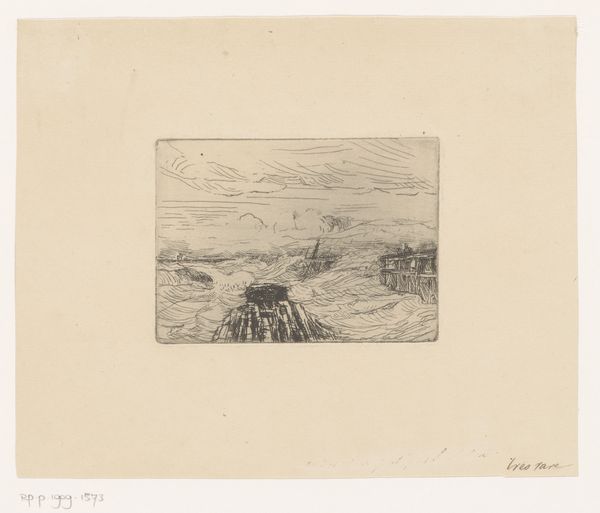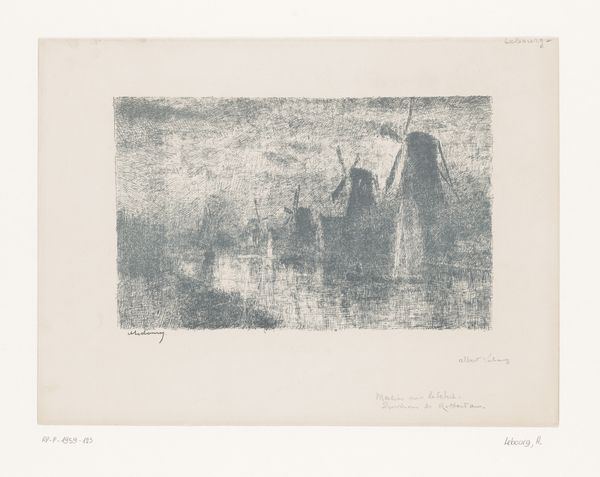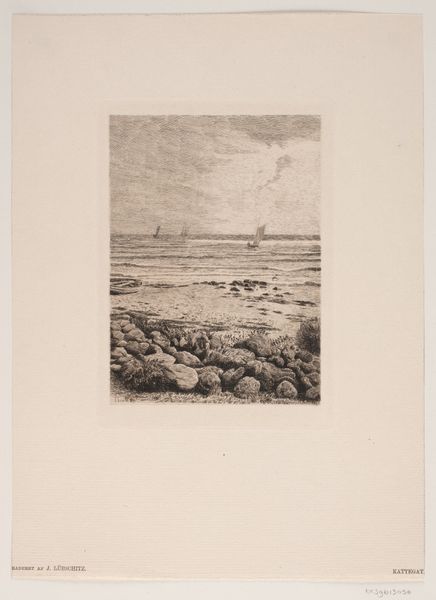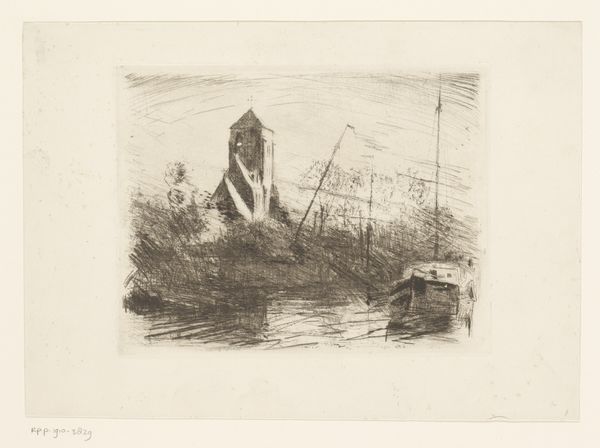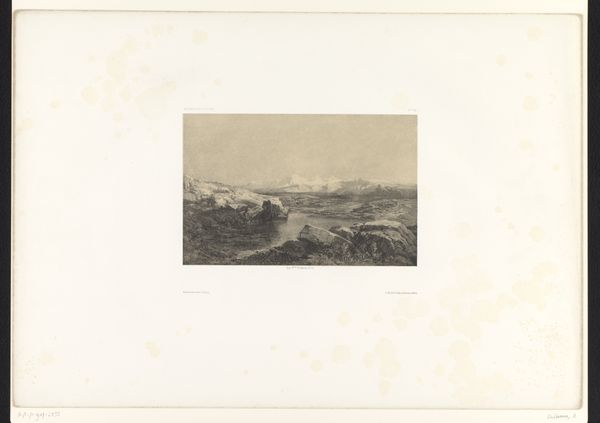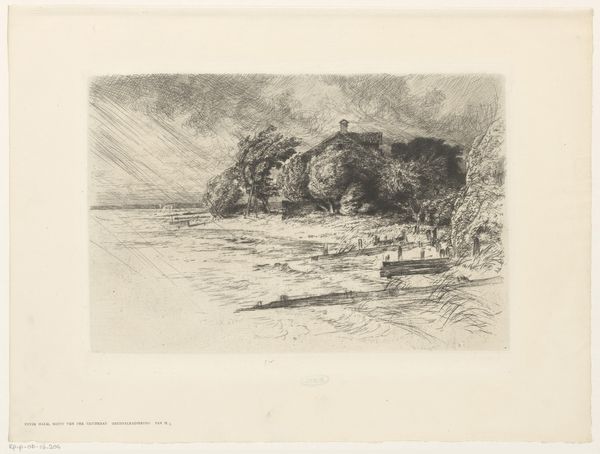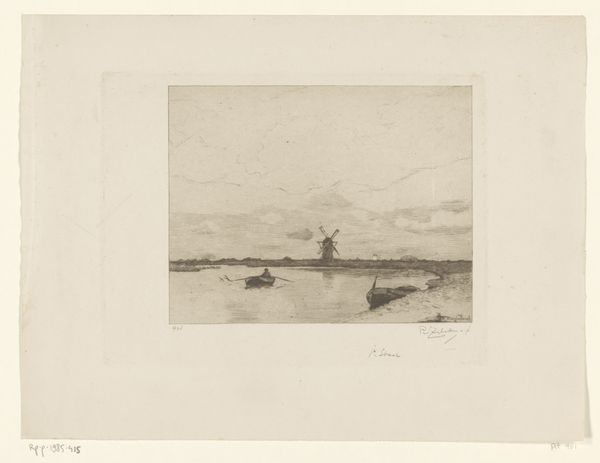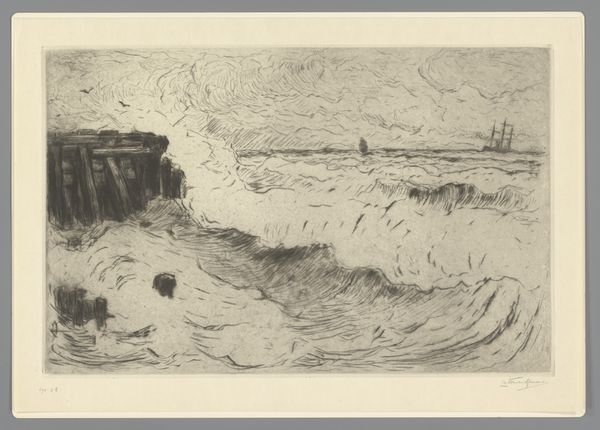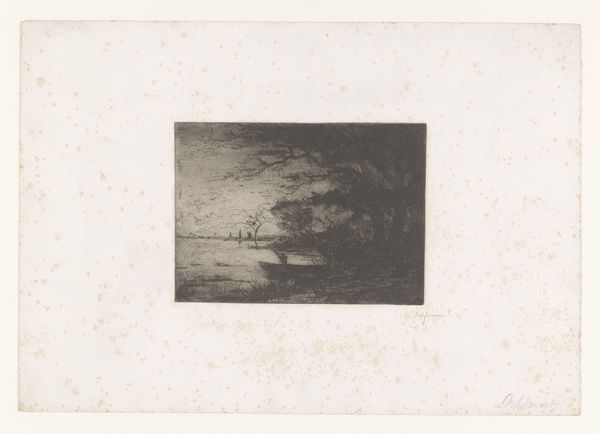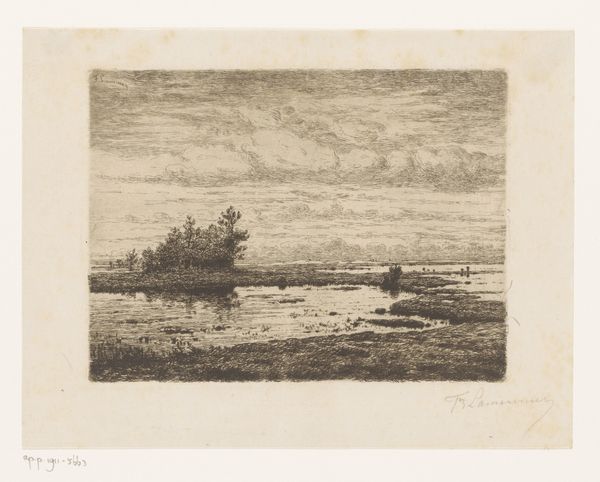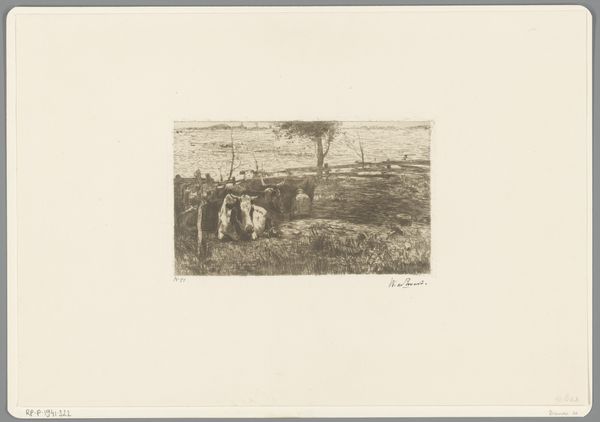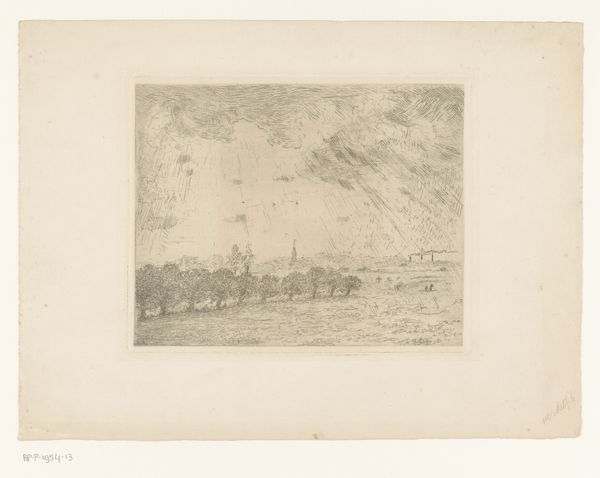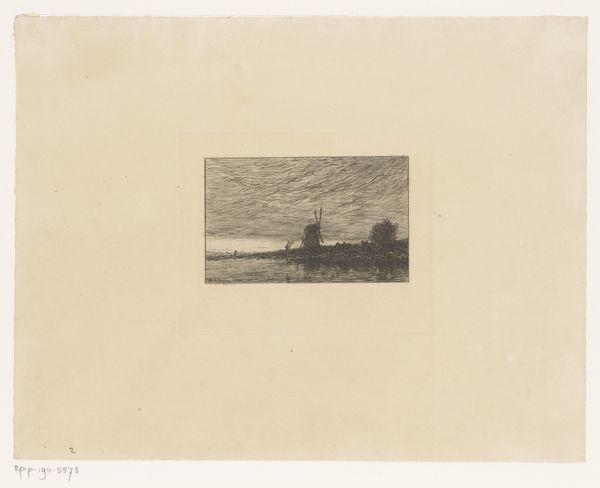
Dimensions: height 150 mm, width 100 mm
Copyright: Rijks Museum: Open Domain
Curator: This etching, created by Carel Nicolaas Storm van 's-Gravesande between 1889 and 1903, is titled “Zeilboten op de Schelde bij nacht," which translates to "Sailboats on the Scheldt at Night." It’s currently held here at the Rijksmuseum. Editor: My immediate response is a sense of brooding. The monochrome print feels turbulent, the sky and water blending almost seamlessly, obscuring any defined boundary. Curator: The impressionistic style really contributes to that mood. Storm van 's-Gravesande, like many artists of his time, was captivated by capturing fleeting moments and atmospheres. Think about how this period intersects with growing industrialization. He seems to grapple with how technology reshaped not just the physical world, but human emotion too. Editor: Absolutely. The boats, although central, feel almost swallowed by the scene. Consider the perspective – we're not placed on one of those boats. The image feels almost voyeuristic as if we're meant to look at the boats at the whim of the turbulent Schelde. There’s a lack of control depicted, both physically in the landscape and perhaps allegorically. Curator: You bring up an interesting point about control. During this era, port cities such as this became symbolic of international trade. Think about colonialism, class struggles, and societal reform within a single image of boats sailing in murky darkness. Storm van 's-Gravesande's choice to render it in etching gives the final piece an element of accessibility through reproducible prints. Editor: That reproducible quality is key! The work speaks volumes about class dynamics – mass produced, available and meant to be studied closely in a comfortable home. Not necessarily enjoyed by those in it! This reminds us that the image is for a public far removed from the lives and realities of workers on those docks and boats. Curator: I appreciate that insight into how the work may speak on power structures in the Netherlands and beyond. The image evokes questions around how art interacts with its viewing audience through cultural movements. Editor: Ultimately, its success lies in that lingering feeling. An unnerving, yet beautiful portrayal of vulnerability. Curator: Agreed. I’m walking away seeing this less as a landscape, and more as an observation of human uncertainty and collective helplessness in a rapidly transforming society.
Comments
No comments
Be the first to comment and join the conversation on the ultimate creative platform.
